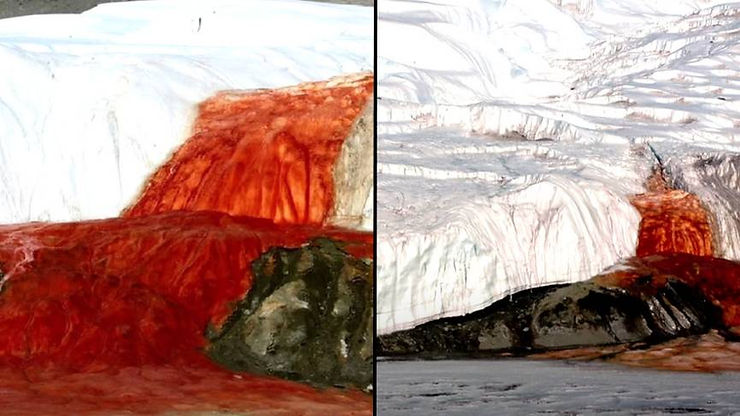By: Sammy Wang
In 1911, British geologist Thomas Griffith Taylor went on an expedition to Antarctica and came across a strange glacier spilling out red water. This glacier would be named the Taylor Glacier, but the site would be nicknamed Antarctica’s Blood Falls.
In 2019, lead researcher Berry Lyons and his team from Ohio State University went to Antarctica to discover the truth behind the blood-red water.
When Lyons and his team inspected the water, they found traces of iron in it, and iron is known to turn blood red when exposed to air. With further research, the team discovered that the red water came from subglacial lakes (water under a glacier) filled with iron-rich nanospheres. Nanospheres are 100 times smaller than red blood cells, which explains why older devices could not detect it.
Ken Livi, a researcher in the team, said that he noticed the iron-filled nanospheres and many other elements like silicon, calcium, aluminum, sodium, etc.
“To be a mineral, atoms must be arranged in a very specific, crystalline structure. These nanospheres aren’t crystalline. So the methods previously used to examine the solids did not detect them,” Livi said.
There were also live Micros trapped in the water, but the researchers still haven’t found out how they survived.
The team believes their results can come in use for life beyond Earth. The subglacial lake beneath Taylor Glacier is incredibly salty without light and oxygen. When sunlight evaporates sea water, it leaves behind sea salt crystals. Oxygen plays a part in the process; water contains oxygen, but when oxygen dissolves during evaporation, it makes the water saltier.
With no light and oxygen in the salty water, the lake is similar to the conditions on planet Mars.
“Our work has revealed that the analysis conducted by rover vehicles is incomplete in determining the true nature of environmental materials on planet surfaces,” Livi said. “This is especially true for colder planets like Mars, where the materials formed may be nanosized and non-crystalline.”
This opens the possibility that other planets may contain life forms just waiting to be discovered. Unfortunately, scientists don’t have the current equipment to test the theory.
Sources:











